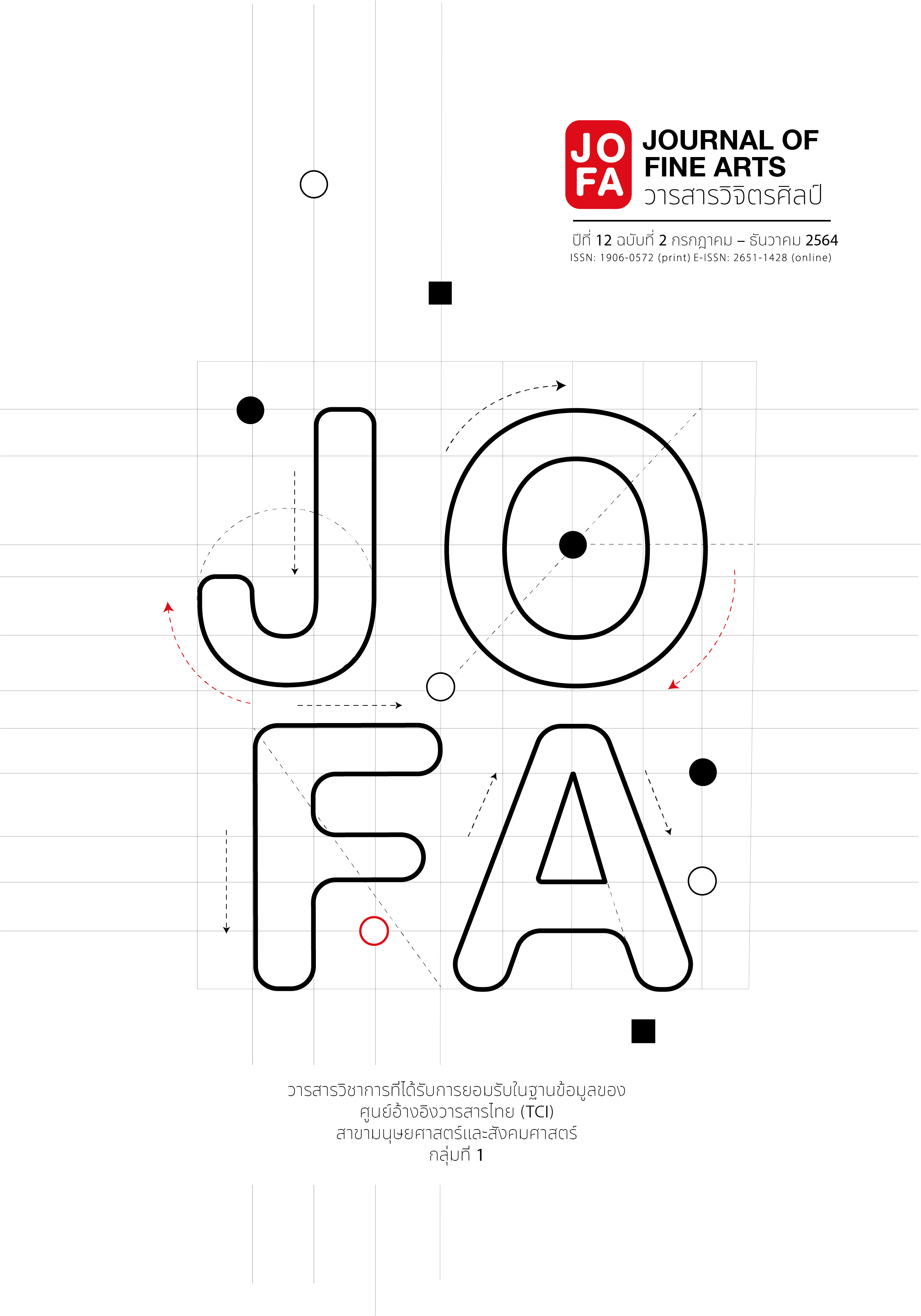Bowling in the garden
Main Article Content
Abstract
Bowling in the garden is the result of research on creating interactive art or Relational art/Relational Aesthetics that has brought a new process into games that do not have a set of pre-defined rules such as in sports. The rules are defined jointly between the creative researcher and the visitors of the work in each group for the experiences, joyfulness, and cordiality.
The Relationship of people in today’s society is changing because of technology in this digital era, with people spending most of the time with electronic gadgets, being engaged with online presence, primarily online media. Hence, outdoor activities are becoming increasingly uncommon in today’s society. The bowling ball is a simple activity used as a medium to forge friendship and relationship. The rules are not complicated and most of the participants can come up with their own rules. The goal is to encourage participation. The arbitrary rules that vary according to the group of participants are part of the work in accordance with the objective of participation in creative art.
The Creative researcher creates the work together with the participants of the interactive art. The visitors are able to participate in the work through the interaction with the bowling and garden as medium. This creates a conversation which contributes to a healthy mind, body and relieve participants from fatigue accumulated from routine work or main work in daily life.
The Merging point between two different sciences in the context of application in society is the intersecting world between the arts and sports. This results in an overall benefit of generosity, compassion, and love for unity among the participants in the organized activities and the audience that is interested in participating in the activities of the new branch of contemporary art called “related aesthetics or interacting aesthetics”.
The Beauty of the work is seen in the joy of the participants in the ‘Bowling in the garden’ found on their facial expressions and through the gestures in which the participants must “create meaning” and “interpret” the art by him/herself. The artwork is experienced and the meaning is acquired at the end of the participation in the activity.
Article Details
References
Boonpipattanapong, P. “Sinlapa Thī Khun Dǣk Dai: Prawattisāt Khō̜ng ʻĀhān Nai Thāna Ngān Sinlapa. [Eatable Artwork: History of Food as Art].” The matter. Accessed August 22, 2018. https://thematter.co/thinkers/art-you-can-eat/37406.
Conde, R. E. Interview by Chimpukdee, U., Makok Art Space, March 13, 2018.
Gasorngatsara, S. Interview by Chimpukdee, U., Makok Art Space, February 14, 2018.
Juntaratip, K. Interview by Chimpukdee, U., Makok Art Space, February 14, 2018.
Limwatana, N. Interview by Chimpukdee, U., Makok Art Space, March 1, 2018.
Mullikamas, P. “Sinlapa Læ Suntharīyasāt Kīaonư̄ang Khō̜ng Khon Rūamsamai. [Arts and Relational Aesthetics of Contemporary people]. ” TCDC. Accessed March 8, 2018. https://bit.ly/2PImG5X.
Petmaya. “ Phā Phisūt Mī ʻArai Yū KhāNg Nai Lūk Bōling?. [Open it up, what is inside a bowling?].” Petmaya. Accessed March 8, 2018. https://bit.ly/2ST4QPy.
Rodbun, S. “Sinlapa Kap Pati Samphan Khō̜ng Phū Dū. [Art and Interaction of the viewer]. The 57th National Exhibition of Art (exhibition catalog 2017), Silpakorn University. Accessed March 8, 2018. https://bit.ly/2CdNHKI.
Yale University Art Gallery. “Modern And Contemporary Art.” Yale University Art Gallery. Accessed August 22, 2018. https://artgallery.yale.edu/collections/objects/43792.


